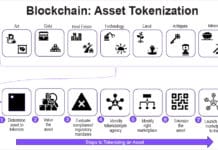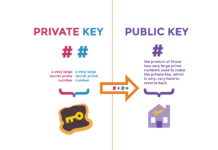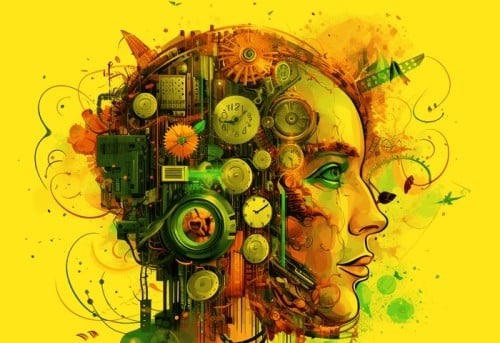Open source generative AI tools are software programs and libraries that enable users to generate creative and novel output using AI algorithms. They are smart and powerful, and enable various forms of content generation.
Generative AI is designed to create new and original content or data that has not been seen before. It uses machine learning algorithms to generate new output based on the input provided, without requiring explicit programming. Generative AI can be used for a wide range of tasks, including image and text creation, music composition, and video production. It is a powerful tool for automation and has the potential to revolutionise many industries, including advertising, design, and entertainment.
Open source tools for generative AI are software programs and libraries that enable users to generate creative and novel output using AI algorithms. These tools allow developers to create autonomous systems that can understand, learn, and adapt to new input, resulting in new and unique outputs. There are several open source tools available for generative AI, including TensorFlow, Keras, PyTorch, GPT-2, Unity-ML, and many others. These tools provide developers with a variety of features for generating content in various forms, such as images, music, text, and video. They also provide comparative ease of use and flexibility, making them ideal for researchers and developers who want to explore the potential of generative AI-based solutions. The proliferation of open source tools for generative AI indicates that there is enormous potential in this field and the possibility of many applications that can be explored for creativity, personalisation, and automation.
These tools enable developers and researchers to explore the creative possibilities of generative models, leading to innovative applications and solutions.
Importance of open source tools in AI development
- Accessible to everyone: Open source tools, software and libraries are freely available and can be accessed by anyone, irrespective of their geographical location or financial background. This makes it easier for developers from all over the world to collaborate and contribute to the development of AI technologies.
- Speed up innovation: Open source software fosters innovation because it allows developers to see the progress and receive feedback from their peers, and to build on each other’s ideas. With these tools, developers can quickly build new functionality and accelerate innovation in AI.
- Ensure transparency: Open source tools provide transparency and accountability in AI development. This is because the code is open and available for anyone to inspect and contribute to. This prevents unethical or malicious AI practices.
- Reduce dependency: Proprietary software and platforms can create a significant dependency on the vendor. This can lead to a lack of innovation and stagnation of the technology. Open source software reduces this dependency, as developers can contribute to the technology and bring new ideas.
- Promote collaboration: Collaboration is vital for the development of AI technology. Open source tools encourage developers to work together, share ideas, and build inclusive communities. This leads to better products, more efficient use of resources, and a stronger AI ecosystem.
In a nutshell, open source tools play a crucial role in AI development as they provide accessibility, encourage innovation and collaboration, ensure transparency, and reduce dependency.
Types of generative models
There are several types of generative models, including:
- Variational autoencoder (VAE): A type of neural network that maps input data to the latent space and then back to generate new data.
- Generative adversarial networks (GAN): A neural network that generates new data by pitting a generator network against a discriminator network.
- Restricted Boltzmann machines (RBM): A type of stochastic neural network that models the probability distribution of binary data.
- Hidden Markov models (HMM): A probabilistic model that represents a sequence of observations using a set of hidden states.
- Autoregressive (AR) models: A type of time-series model that predicts future values based on past observations.
- Recurrent neural networks (RNN): A type of neural network that models sequential data by maintaining a hidden state.
- Transformers: A neural network architecture that uses self-attention to model sequential data.
- Gaussian Mixture Models (GMM): A probabilistic model that represents the probability distribution of data using a combination of Gaussian distributions.
- Boltzmann machines (BM): A type of stochastic neural network that models the probability distribution of binary or real-valued data.
- Adversarial autoencoder (AAE): A type of neural network that combines the VAE and GAN architectures by using an adversarial loss in addition to the reconstruction loss.
Popular open source tools for generative AI
Here is a non-exhaustive list of various open source tools for generative artificial intelligence.
TensorFlow: TensorFlow is an open source software library that has become a go-to tool for developers who want to create deep learning models. It uses a data flow graph to represent computational graphs. TensorFlow enables developers to build, deploy, and run machine learning models on a range of platforms.
Keras: Keras is an open source software library written in Python. It facilitates the creation of complex neural networks with minimal coding efforts and provides a user-friendly interface.
PyTorch: PyTorch is an open source machine learning framework for building and training neural networks in Python. It was developed by Facebook’s artificial intelligence research group to offer better flexibility and scalability than TensorFlow.
Theano: Theano is an open source numerical computation library that allows users to define, optimise, and evaluate mathematical expressions. Theano builds mathematical models for machine learning or scientific computing.
Caffe: Caffe is an open source deep learning framework that is maintained by the Berkeley Vision and Learning Center. It uses a configuration file to design and train models and supports a wide range of network architectures, such as convolutional neural networks and recurrent neural networks.
Each of these tools has its own pros and cons, and their suitability depends on the specific use case. Some tools may be better suited for specific tasks, while others offer more flexibility and ease of development.
Deep learning frameworks for generative AI
There are many deep learning frameworks that are widely used to facilitate the construction of generative AI models. Each framework has its strengths and capabilities, and choosing the right one depends on the specific requirements of the project. Here are some of the most popular deep learning frameworks for generative AI.
TensorFlow: Developed by Google, TensorFlow is a powerful and flexible deep learning framework that supports various applications including image and speech recognition, natural language processing, and generative AI. It has a large and active user community and is supported by many tutorials and online resources.
PyTorch: PyTorch is gaining popularity quickly due to its ease of use and dynamic approach to building models. It uses a syntax similar to Python, and has a large community that contributes to its development.
Generative adversarial networks (GANs): GANs involve training two competing neural networks. One of these networks, the generator, generates content, while the other, the discriminator, learns to distinguish between real and fake output. GANs are used for various applications, including image generation, text synthesis, and music composition.
DeepDream: DeepDream is a visualisation tool created by Google engineers using the TensorFlow framework. It applies a convolutional neural network to images and enhances them by generating new content. The resulting images are often mesmerising and surreal.
Autoencoder: Autoencoders are a type of neural network that learns to reconstruct input data. They are used to compress data while retaining its essential features. Autoencoders have been used for generative AI applications such as image generation and text synthesis.
In conclusion, deep learning frameworks have brought about new possibilities in generative AI. Each framework has its strengths and capabilities, and choosing the right one will depend on the specific requirements of the project.
Advantages and disadvantages of these frameworks
Advantages
- Faster development: Deep learning frameworks facilitate quicker and easier development of generative AI models. They come with pre-built neural network architectures, allowing developers to focus on data and specific use case details rather than coding neural network models from scratch.
- Scalability: These frameworks offer scalability for generative AI models. They can train models on large datasets and distribute computations across multiple GPUs or CPUs efficiently, enabling scaling up for handling more complex use cases.
- Flexibility: Deep learning frameworks provide a high level of flexibility, allowing developers to fine-tune models according to their requirements. Options for regularisation, optimisation, and customisation enable the creation of unique generative models.
- Integration: These frameworks integrate well with other tools and software, including cloud computing services, data management tools, and applications. This facilitates easy deployment and productionisation of generative AI models.
Disadvantages
- High resource requirements: Deep learning frameworks for generative AI require high computational resources, including powerful GPUs and large memory. This results in significant hardware and infrastructure costs for organisations.
- Complexity: These frameworks have a steep learning curve, requiring proficiency in machine learning for effective use. This complexity makes it challenging for newcomers to quickly develop expertise in generative AI by using them.
- Need for large datasets: Generative AI models trained with deep learning frameworks require large datasets. Obtaining these datasets can be challenging, requiring significant data preparation, cleaning, and labelling efforts.
- Black-box nature: Deep learning frameworks often yield models that are difficult to interpret. Generative AI models are typically complex, and the black-box nature of these frameworks can obscure which features of the data the models are using to generate output.
Generative models
Generative models are an emerging class of machine learning algorithms enabling computers to automatically learn patterns from input data. These models have gained popularity in practical applications due to their ability to generate new, previously unseen data that resembles the original dataset. They offer a broader range of capabilities than traditional machine learning algorithms like supervised and unsupervised learning, and can be used in a variety of domains such as image and speech recognition, natural language processing, and anomaly detection.
Here are a few use cases of generative models in different industries.
Image and video synthesis: Generative models such as variational autoencoders (VAEs), generative adversarial networks (GANs), and convolutional neural networks (CNNs) are widely used for image and video synthesis generating new, realistic-looking images and videos applicable in content creation, virtual reality, and gaming.
Chatbots and voice assistants: Generative models develop text and speech, creating chatbots and voice assistants that can mimic human-like responses, beneficial in customer service, healthcare, and education.
Recommendation systems: Recommendation systems are widely used in the e-commerce, social media, and entertainment industries. Generative models can help in generating personalised recommendations for customers based on their search history, preferences, and behaviour.
Natural language processing: Generative models are an essential component of NLP. These models can generate text, summaries, and captions applicable in chatbots, news summarisation, and language translation.
Data augmentation: These models augment data, increasing dataset size, which is beneficial for training machine learning models in healthcare, finance, and manufacturing.
Anomaly detection: Generative models detect anomalies in data, which is beneficial in finance, healthcare, and cybersecurity industries, These models learn the normal distribution of data and identify any outliers or anomalies in it.
Simulation and modelling: Generative models can realistically simulate and model complex systems in industries such as automotive, aerospace, and energy, aiding in the testing and optimisation of products.
Challenges facing the development of open source tools for generative AI
Lack of standardisation: The absence of standardisation in generative AI poses a major challenge, making it difficult for developers to create open source tools that work seamlessly across different applications.
Difficulty in creating general-purpose tools: General-purpose tools are essential in open source development as they enable developers to create solutions for multiple use cases. However, developing general-purpose tools for generative AI is challenging due to the diversity of problems and the heterogeneity of datasets involved.
Large datasets are expensive: Obtaining large datasets for training AI models is essential but prohibitively expensive or impractical due to factors such as limited access to data, lack of diversity, and privacy concerns, posing challenges for open source generative AI tool developers.
Legal constraints: Developers must ensure that the tools they create are compliant with the laws and regulations governing their use. This can be challenging given the complexity of AI systems, and the sensitivity of the data and applications involved.
The need for expertise: Developing open source tools for generative AI demands expertise in various areas, including AI, computer vision, and deep learning. Developing the necessary programming skills may require a significant amount of time, creating a barrier to entry for some developers.
Opportunities for further innovation
Enhancing user interface: Improving the user interface design of open source tools for generative AI can enhance user interaction and experience.
Incorporation of machine learning techniques: Integrating machine learning techniques can improve the accuracy and effectiveness of open source generative AI tools.
Integration with cloud computing: The integration of open source generative AI tools with cloud computing platforms can enable processing large amounts of data and rapid development of complex models.
Expansion of algorithm libraries: Adding new and more advanced algorithms to existing libraries of open source tools for generative AI can enhance capabilities and offer more diverse applications.
Cross-disciplinary collaboration: Collaboration between researchers from different disciplines such as mathematics, computer science, and cognitive science can lead to innovative approaches to generative AI.
Human involvement: Incorporating human input and feedback into generative AI development can improve tool quality and alignment with human values.
Ethical considerations: Considering the ethical implications of AI development can ensure responsible use of generative AI for societal benefit.
In conclusion, open source tools for generative AI are rapidly evolving, enabling experimentation and innovation in AI technology without significant financial investment, and fostering collaboration and knowledge sharing. As generative AI progresses, open source tools will play a critical role in ensuring accessibility and inclusivity.













































































